From a distance it almost looks like dancing. A skier emerges rhythmically and elegantly from the immaculate white, only to disappear again and again waist-deep in a dusty cloud of snow. In the deep powder of Whistler Blackcomb's 7th Heaven area, this skier needs to feel free and weightless right now. Just like in the "seventh heaven", as the name of the slope promises.
When it's snowing hard in the western Canadian Coast Mountains, this area on Blackcomb Mountain is heaven on earth for skiers and snowboarders. Blackcomb is one half and Whistler Mountain is the other half of North America's largest ski area.
27 lifts open up two large ski mountains with several halfpipes and snow parks as well as more than 200 marked runs. More important than the large number of pistes, however, are the impressive amounts of snowfall, averaging almost twelve meters per year, and the almost infinitely large area.
Unlike in the Alps, where you are not supposed to leave the often narrow runs, in Whistler - as in North American resorts in general - you can ski anywhere within the secured ski area. Here on an area of 33 square kilometers. "You can ski, what you can see - that's our motto," says Angela from the Whistler Ski Patrol. You can ski into every slope, every forest and every gorge within the ski area boundary, which is marked with a leash. When you see what's going on - and when you can get by in unprepared terrain.
While in Europe most skiers carve their turns on flattened pistes with narrow carving skis, in Whistler many ski in deep snow with wide planks under their feet. Skiing here is more playful and, yes, freer.
"Freeriding" in Whistler is more than the definition of "free riding off-road". It's a way of life. Eric "Hoji" Hjorleifson is one of those who have internalized the "freerider lifestyle" and are living their dream in Whistler.
The Canadian is a well-known freeski pro. Many ski films in which he is involved and shows his skills were filmed in Whistler, which provides an ideal backdrop with snow-covered forests, spectacular steep slopes and bizarre peaks. "So you could say I came to Whistler for the job," says Hjorleifson.
It was the same for Beat Steiner. He emigrated from Switzerland and was on the other side of the camera for many years. For years, Steiner shot in and around Whistler in the Coast Mountains, which stretch from Vancouver, about an hour and a half's drive south, to Alaska. And he runs several heli-skiing lodges in British Columbia with his company.
Like Hjorleifson, Steiner never left Whistler again. Both are always fascinated by how Whistler was able to develop from a hippie nest to the largest ski area in North America.
"It all started when a couple of ski enthusiasts wanted to make their Olympic dream come true," says Steiner. In 1960, a group led by Norwegian-born Franz Wilhelmsen decided to organize the Winter Olympics north of Vancouver. Although there was no ski resort there.
In their search for a suitable mountain, they found London Mountain in Alta Lake. There they cut aisles in the woods and built the first lifts. When the ski resort opened in 1966, they renamed Alta Lake to Whistler and London Mountain to Whistler Mountain. The foundation stone was laid.
But the Olympic dream was shattered. In 1968, Whistler failed with his hasty candidacy for the 1976 Winter Games - Innsbruck was awarded the contract.
Instead of athletes from all over the world, so-called "Ski Bums" flocked to Whistler, who kept their heads above water with odd jobs in order to be able to go skiing every day. They made Whistler a ski hippie stronghold in the late 1960s. The motto was “Sex, Drugs and Skiing”.
A legendary photo from those days is still sold in the Whistler Museum: a group photo of naked skiers in front of a hut, wearing nothing but ski boots.
Whistler became the epicenter of the new ski freestyle movement. The young savages known as “Hot Dogs” refused traditional racing and preferred to throw themselves down mogul slopes, jump over ramps and dance ski ballet with skis on their feet.
"It was a wild time," says Darryl Bowie. The former world-class freestyler and later president of the Canadian Freestyle Federation still lives in Whistler. As a coach at the "Extremely Canadian" ski school, he gives tips and tricks for the sometimes very demanding terrain.
"The fact that Whistler became a world-class resort is largely due to Al Raine and Nancy Greene," says ski instructor Bowie. Greene is the most successful ski racer in the country, in 1968 she was Olympic champion and overall World Cup winner. In 1978, the "Rosi Mittermaier of Canada" developed the Whistler Village with hotels, shops and restaurants together with her husband Al Raine.
The result is a town at the foot of the ski area and the "ski-in/ski-out" luxury that is very rare to find in Canada, with accommodation right on the slopes and lifts.
Along with Whistler Village, it was the opening of the second ski area on Blackcomb Mountain in 1980 that catapulted Whistler into a different league. Both ski areas fought a relentless competition.
"We didn't have that much terrain, not that many lifts, and we didn't have 15 years of history," recalls Blackcomb manager Hugh Smythe. "So we had to come up with something." So he had coffee served free of charge in elevator queues and swept the snow off the guests' cars himself in the afternoon.
Whistler has retained this service culture to this day, but the rivalry is long forgotten. With the merger of the two ski areas in 1998, everything grew together. This was all the more true when, in 2003, the dream of the Olympics came true after the third attempt: together with Vancouver, Whistler was awarded the contract and hosted the 2010 Winter Games.
These Olympic Games made Whistler known worldwide. And they're still ubiquitous: tourists take selfies in front of the Olympic rings at Olympic Plaza's ice rink, and vacationers race down Dave Murray's Olympic run on Whistler Mountain.
The route ends on the 11 km long slope in the area in the Creekside district, which is one of three entry points to the ski area. A new gondola and lift have been operating from Creekside since December 2022 - they can take significantly more skiers up the mountain than the previous facilities.
Further lift upgrades on both mountains are planned for next season. Vail Resorts, which bought Whistler Blackcomb for billions in 2016, invests tens of millions of dollars in facilities and restaurants every year.
The "Peak2Peak" gondola, which has connected Whistler and Blackcomb since 2008 at an altitude of around 1850 meters, is potentially record-breaking. With only two masts, the cable car covers 4.4 kilometers. In the middle, the gondolas hover above the valley at a record height of 436 meters.
“It used to take a good hour to move from one mountain to the other. Today it takes eleven minutes,” says freeski star Hjorleifson, who is always on the hunt for fresh powder.
However, untouched deep snow slopes are no longer easy to find because Whistler is booming. The hotels are well booked - from the simple guesthouses to the "Fairmont Chateau Whistler", which towers like a castle out of the woods. Nowhere else in Canada are Airbnb apartments easier and more expensive to rent.
Day-trippers from Vancouver and, increasingly, from the USA are joining the vacationers. When it gets crowded on weekends, the locals prefer to go cross-country skiing or go straight to the Scandinave Spa with its countless saunas and hot outdoor pools.
Monday through Thursday, however, Whistler remains virtually deserted. Often you are almost alone on the wide pistes and especially in the terrain. Then the steep slopes with "Experts only" signs like Saudan Couloir, Spanky's Ladder or The Cirque are a dream.
Just like relaxed pleasure descents on gently inclined deep snow slopes in the Symphony and Harmony Bowl or in "7th Heaven", where skiers and snowboarders think they are in heaven.
Destination: Whistler Blackcomb is the largest ski area in North America. It is located in the Canadian province of British Columbia in the Coast Mountains. It's about two hours from Vancouver.
The ski area: Whistler Blackcomb offers 33 square kilometers of skiable area, over 200 runs (20 percent easy, 55 percent intermediate, 25 percent difficult), 27 lifts and 9 people movers.
Getting There: The nearest airport is Vancouver, which is served by Air Canada. From the airport you can take a rental car or shuttle bus to Whistler. Travelers from Germany need a passport and an electronic travel authorization (eTA) previously obtained online to enter the country. The Federal Foreign Office and the Canadian government provide further information on its website.
For more information: whistlerblackcomb.com; hellobc.de; whistler.com

 Iran-Israel conflict: what we know about the events of the night after the explosions in Isfahan
Iran-Israel conflict: what we know about the events of the night after the explosions in Isfahan Sydney: Assyrian bishop stabbed, conservative TikToker outspoken on Islam
Sydney: Assyrian bishop stabbed, conservative TikToker outspoken on Islam Torrential rains in Dubai: “The event is so intense that we cannot find analogues in our databases”
Torrential rains in Dubai: “The event is so intense that we cannot find analogues in our databases” Rishi Sunak wants a tobacco-free UK
Rishi Sunak wants a tobacco-free UK Alert on the return of whooping cough, a dangerous respiratory infection for babies
Alert on the return of whooping cough, a dangerous respiratory infection for babies Can relaxation, sophrology and meditation help with insomnia?
Can relaxation, sophrology and meditation help with insomnia? WHO concerned about spread of H5N1 avian flu to new species, including humans
WHO concerned about spread of H5N1 avian flu to new species, including humans New generation mosquito nets prove much more effective against malaria
New generation mosquito nets prove much more effective against malaria The A13 motorway closed in both directions for an “indefinite period” between Paris and Normandy
The A13 motorway closed in both directions for an “indefinite period” between Paris and Normandy The commitment to reduce taxes of 2 billion euros for households “will be kept”, assures Gabriel Attal
The commitment to reduce taxes of 2 billion euros for households “will be kept”, assures Gabriel Attal Unemployment insurance: Gabriel Attal leans more towards a tightening of affiliation conditions
Unemployment insurance: Gabriel Attal leans more towards a tightening of affiliation conditions “Shrinkflation”: soon posters on shelves to alert consumers
“Shrinkflation”: soon posters on shelves to alert consumers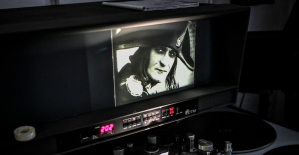 The restored first part of Abel Gance's Napoléon presented at Cannes Classics
The restored first part of Abel Gance's Napoléon presented at Cannes Classics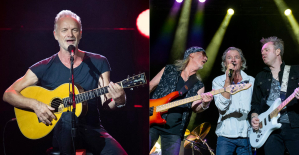 Sting and Deep Purple once again on the bill at the next Montreux Jazz Festival
Sting and Deep Purple once again on the bill at the next Montreux Jazz Festival Rachida Dati: one hundred days of Culture on the credo of anti-elitism
Rachida Dati: one hundred days of Culture on the credo of anti-elitism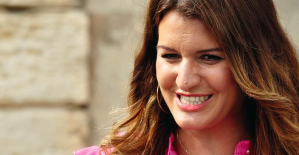 The unbearable wait for Marlène Schiappa’s next masterpiece
The unbearable wait for Marlène Schiappa’s next masterpiece Skoda Kodiaq 2024: a 'beast' plug-in hybrid SUV
Skoda Kodiaq 2024: a 'beast' plug-in hybrid SUV Tesla launches a new Model Y with 600 km of autonomy at a "more accessible price"
Tesla launches a new Model Y with 600 km of autonomy at a "more accessible price" The 10 best-selling cars in March 2024 in Spain: sales fall due to Easter
The 10 best-selling cars in March 2024 in Spain: sales fall due to Easter A private jet company buys more than 100 flying cars
A private jet company buys more than 100 flying cars This is how housing prices have changed in Spain in the last decade
This is how housing prices have changed in Spain in the last decade The home mortgage firm drops 10% in January and interest soars to 3.46%
The home mortgage firm drops 10% in January and interest soars to 3.46% The jewel of the Rocío de Nagüeles urbanization: a dream villa in Marbella
The jewel of the Rocío de Nagüeles urbanization: a dream villa in Marbella Rental prices grow by 7.3% in February: where does it go up and where does it go down?
Rental prices grow by 7.3% in February: where does it go up and where does it go down? With the promise of a “real burst of authority”, Gabriel Attal provokes the ire of the opposition
With the promise of a “real burst of authority”, Gabriel Attal provokes the ire of the opposition Europeans: the schedule of debates to follow between now and June 9
Europeans: the schedule of debates to follow between now and June 9 Europeans: “In France, there is a left and there is a right,” assures Bellamy
Europeans: “In France, there is a left and there is a right,” assures Bellamy During the night of the economy, the right points out the budgetary flaws of the macronie
During the night of the economy, the right points out the budgetary flaws of the macronie These French cities that will boycott the World Cup in Qatar
These French cities that will boycott the World Cup in Qatar Champions League: France out of the race for 5th qualifying place
Champions League: France out of the race for 5th qualifying place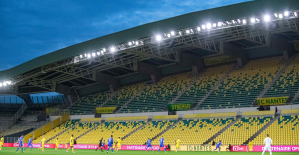 Ligue 1: at what time and on which channel to watch Nantes-Rennes?
Ligue 1: at what time and on which channel to watch Nantes-Rennes? Marseille-Benfica: 2.99 million viewers watching OM’s victory on M6
Marseille-Benfica: 2.99 million viewers watching OM’s victory on M6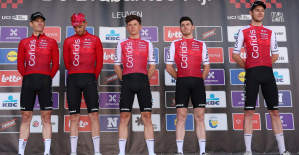 Cycling: Cofidis continues its professional adventure until 2028
Cycling: Cofidis continues its professional adventure until 2028


















